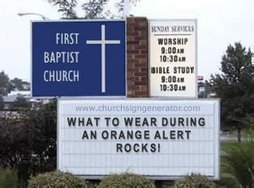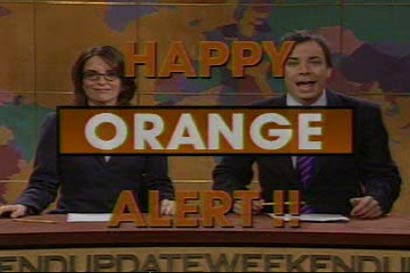 October 22nd, 2008 - CMJ Music Festival Day Two - Bowery Ballroom, New York - Audrey Sessions, Love as Laughter, Wild Sweet Orange, and Margot and the Nuclear So & Sos
October 22nd, 2008 - CMJ Music Festival Day Two - Bowery Ballroom, New York - Audrey Sessions, Love as Laughter, Wild Sweet Orange, and Margot and the Nuclear So & SosImages by Dominick Mastrangelo



 October 22nd, 2008 - CMJ Music Festival Day Two - Bowery Ballroom, New York - Audrey Sessions, Love as Laughter, Wild Sweet Orange, and Margot and the Nuclear So & Sos
October 22nd, 2008 - CMJ Music Festival Day Two - Bowery Ballroom, New York - Audrey Sessions, Love as Laughter, Wild Sweet Orange, and Margot and the Nuclear So & Sos




When a writer hands over their novel or collection to a publisher no matter the existing relationship there is a great deal of faith involved. As the writer creates characters and dialog and storylines, they also envision what the novel will look like as a whole. They typically know exactly what the cover and spine and photo on the back will look like. The publisher adds a whole new set of ideas, and an established vision for their press. They add their brand and sensibility to the project, and many times the writer is wondering what happened.
Pittsburg's Che Elias has found a solution to this issue, and he publishes his own books. With the artistic direction of Michael Hafftka, Che has published nine books (both novels and poetry collections) before the age of 30. All but one of his books have been published through Six Gallery Press of which he is co-editor. His latest novel, West Virginia, is a dark and twist glance into a world of paranoia. A world filled with fear and pain and confusion, a world contained in a room built with words. A room that is the author, the reader, and all you will ever know or see.
Recently, Che was kind enough to answer a few of my questions.
Orange Alert (OA): Your latest novel, West Virginia, was released this month. What can you tell us about your novel?
Che Elias (CE): I wrote the novel about some experiences I had growing up in West Virginia in the 1980s, the book deals with themes of betrayal and reconciliation --I worked a lot of stan brakhage in there-in my descriptions--I'm a big fan of his and most of the book was composed with avant garde cinema as the inspiration--
OA: There are many well placed illustrations in West Virginia. How does your process work with Michael Haffka?
CE: I basically present him with a text, his partner reads it aloud to him then he illustrates it, he usually does this very fast --we've been working together two years now, he really liked my book The Pagan Ellipsis -and i liked his Book conscious unconscious -so we decided to collaborate after talking on the phone a few times -we've become good friends, but we've never actually met in person.
OA: As the half of the team behind Six Gallery Press, what is your vision the press?
CE: To do books that no one else really can, ones people wouldn't see financially viable which includes a lot of the books i get from people, i just feel larger presses -don't touch a book as we know unless it has best seller written on it, my vision at first was to just do experimental fiction, but now i will do anything that's good.
OA: What do you look for in a submission to the press?
CE: I look more so at the person who submitted, it if i can work with them and if they seem honest and if they are willing to put some work into it to.
OA: You have publish several of your own novels, do you have any reservations at all about publishing your own work?
CE: No I've done all of my books except one with Six Gallery Press.... I feel that no one else Could really do them plus i want totally creative control -it's really important in these books especially my early ones, on the recent ones of i have michael hafftka, and ryan bernhardt working on them... the books I've done with ryan vs the ones with micheal is an interesting thing they both have a different approach and it presents my work in a different light -I hope to continue Self Publishing So to Speak And working with them.
OA: What are your thoughts on the phrase "experimental fiction"?
CE: Well Thomas Pynchon William H Gass William Gaddis and William T Vollmann are Four of my favorite Writers they inspired me and made me want to Become a writer -originally, my favorite writers now are pretty much friends of mine Micheal S Begnal and Dana Killmeyer, Whose Books I've published --experimental fiction is interesting But there's a strong divide cause a lot of Bad writers do sloppy work that they Try to Pass off as experimental --They just seem lazy, I think Dana Killmeyer's Novel Paradise Or The Part That Dies is the best experimental piece I've read in a long time, it's experimental in its sparseness and emotionally upfront prose--it's a book anyone could understand but not something a mainstream press could deal with For it's emotional intenseness I'm proud to do books like that with Six Gallery Press.
OA: How do you feel about print on demand services as opposed to traditional off-set printing? Does 6GP utilize POD?
CE: I really had some reservations when I first did and I thought -why can't these books be off set, but then I decided for the money we save it's just another book We can do -- So We do a print run now and place books with Small Press Distribution, but I like POD -which we use on books that we aren't sure that we can move right away, although off set at this point seems preferred by many people, I do prefer POD, I guess I'd have a lot of books laying around my house if not.
OA: What's next for Che Elias and Six Gallery Press?
CE: I am doing a book called Love Poems, it's a sequel to my book death poems, also working a Seven Part series Titled Goal B it's a nihilist and prankster who i met in WV years ago Kind of about his life story each book uses a different style of writing -s o to speak, As far as Six GP goes michael hafftka has a strong vision and I feel i have one too, i guess to keep doing books that are off the beaten path and getting them out there, more libraries are getting our books now thanks to the deal micheal has with spd -and I'm happy that people are submitting books all the time - so just to keep going and get more books to people and dare i say it - institutions.
Bonus Questions:
OA: Coffee? If yes, where can you find the best cup in your area?
CE: Yes, The crazy Mocha In Oakland but now it has about ten locations, so just look for a crazy mocha if you are in pgh.
OA: What type of music do you listen to and who are a few of your favorites?
CE: Many Kinds My personal favorite right now is jandek i just saw him play live a few nights ago it was amazing, but i really like Cat Power , Lou Reed, van dyke Parks, and Richard thompson to name a few .
OA: Is The Abacus really 658 pages?
CE: Yes it really is, it's a long book and I lost the originally draft when I was moving from place to place a few years back, and had to totally rewrite it from memory --I hope you like it how it is.
For more information on Che Elias and Six Gallery Press please visit their website.



 Ponytail
Ponytail










Tim Hall Full Of It (Undie Press, Oct. 14th, 2008)
When I first heard the title of Tim's second novel, Full Of It, I thought it may be dealing with the current election. Yet, when I saw the subtitle, The Birth, Death, and Life of an Underground Newspaper, I knew the truth. Actually, the very first time I met Tim Hall, he was carrying this large hardcover book under his arm, it was multi-colored and in a crude typewriter font. He explained the premise and I was intrigued. Several months later I started receiving mysterious cds on my front step. It was an audio version of Full Of It told three chapters at a time with sound effects and a different voice for each character. It was captivating, I couldn't wait for the next installment of this journey through the struggle to remain together and creative.
Full Of It takes a look at the business side of creativity. A group of friends and acquaintances come together to start a newspaper, but the hierarchy begins to bleed the passion, and soon whose name is listed where and whose story runs when begins to transcend the overall product and value of the paper. As much as it is about struggles for control, it is also about the path of friendships, romances, high and lows, and the trials and errors of a young writer in a big city. Through it all he learns a valuable lesson, there is nothing more treasured than friendship, but everything can change at any time.
 Super XX Man Vol. XII:: There'll Be Diamonds (Tender Loving Empire Oct. 21st, 2008)
Super XX Man Vol. XII:: There'll Be Diamonds (Tender Loving Empire Oct. 21st, 2008)
 There seems to so many bands right now combining thick and funky electronic beats with confusing and lazy lyrics right now, but why not it is a winning combination. Four Texans called Honey Claws have joined the ranks with a mostly electronic, mostly funky, 14-track hip-hop epic. The self-titled album (which is out now) makes you want to dance and lay on the couch all at the same time.
There seems to so many bands right now combining thick and funky electronic beats with confusing and lazy lyrics right now, but why not it is a winning combination. Four Texans called Honey Claws have joined the ranks with a mostly electronic, mostly funky, 14-track hip-hop epic. The self-titled album (which is out now) makes you want to dance and lay on the couch all at the same time.
Listen to: Shout Out (mp3)
 Another artsy Brooklyn band? Yes, but The Loom is not just a cleaver name for a band. The Loom breaks down music into single strands of sound and then lays each piece over the other until a lush and vibrant fabric of sound is created. A vocal ensemble playing inventive folk melodies with patterns and rhythms, syncopated claps, and a real driving sense of melody, The Loom has released an incredible ep called At Last Light. Three songs from At Last Light will appear, along with music by Miles Benjamin Anthony Robinson, and others, in The Youngest Candidate, a documentary about young Americans running for political office directed by Brooklyn filmmaker Jason Pollock (former assistant to Michael Moore) and produced by Lawrence Bender (An Inconvenient Truth) and David Letterman’s production company World Wide Pants. The film will debut in advance of the election this fall. Currently, The Loom has completed writing and is at work on recording their follow-up full length album.
Another artsy Brooklyn band? Yes, but The Loom is not just a cleaver name for a band. The Loom breaks down music into single strands of sound and then lays each piece over the other until a lush and vibrant fabric of sound is created. A vocal ensemble playing inventive folk melodies with patterns and rhythms, syncopated claps, and a real driving sense of melody, The Loom has released an incredible ep called At Last Light. Three songs from At Last Light will appear, along with music by Miles Benjamin Anthony Robinson, and others, in The Youngest Candidate, a documentary about young Americans running for political office directed by Brooklyn filmmaker Jason Pollock (former assistant to Michael Moore) and produced by Lawrence Bender (An Inconvenient Truth) and David Letterman’s production company World Wide Pants. The film will debut in advance of the election this fall. Currently, The Loom has completed writing and is at work on recording their follow-up full length album. I'm From Barcelona's new record Who Killed Harry Houdini? was released on Mute October 14, 2008. The sunny first single, "Paper Planes" - including the B-side "Motorway - was released August 19, 2008.
I'm From Barcelona's new record Who Killed Harry Houdini? was released on Mute October 14, 2008. The sunny first single, "Paper Planes" - including the B-side "Motorway - was released August 19, 2008.  In anticipation of Grampall Jookabox's sublime upcoming LP of whacked out, trashcan-banging, haunted blues, Asthmatic Kitty announces a slew of fun goodies to kill time during your upcoming workweek. The first of which is the way awesome "The Girl Ain't Preggers" videogame.
In anticipation of Grampall Jookabox's sublime upcoming LP of whacked out, trashcan-banging, haunted blues, Asthmatic Kitty announces a slew of fun goodies to kill time during your upcoming workweek. The first of which is the way awesome "The Girl Ain't Preggers" videogame.  Matisyahu is not the typical artist that I like to feature, and when I received this ep I didn't think I would be mentioning it. However, Matisyahu really exceeded my expectation on this album. Maybe they were set low, but still these four tracks present a great deal of potential for Yahu next full-length album. On October 21, Matisyahu will release his newest EP, Shattered, via Epic Records. The four-song EP features tracks from his new full-length album, Light, to be released in early 2009.
Matisyahu is not the typical artist that I like to feature, and when I received this ep I didn't think I would be mentioning it. However, Matisyahu really exceeded my expectation on this album. Maybe they were set low, but still these four tracks present a great deal of potential for Yahu next full-length album. On October 21, Matisyahu will release his newest EP, Shattered, via Epic Records. The four-song EP features tracks from his new full-length album, Light, to be released in early 2009. The Peel Back: Sugar Copper Blue (Rykodisc Sept. 1992)
The Peel Back: Sugar Copper Blue (Rykodisc Sept. 1992)










